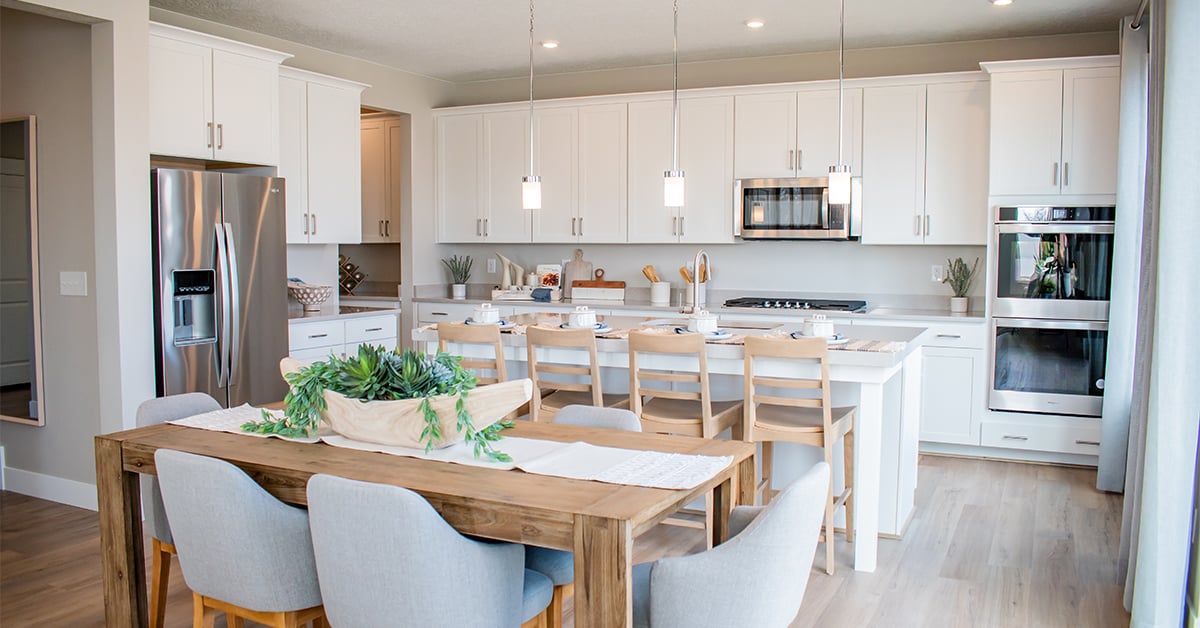Owning a home goes beyond just purchasing property; it offers stability, security and gives an individual a sense of achievement.
But while exciting, finding your dream home can be overwhelming. With numerous options to consider, from comparing neighborhoods to making financing decisions, it's easy to feel lost in a sea of choices. One aspect of this journey is distinguishing between your needs and wants in order to secure your ideal home.
How to Balance Priorities in Your New Home Search
Luckily, we’re about to ease that last bit. We’ll walk you through the steps of determining your needs and wants, so you can purchase a property that meets all your new home priorities.
Step 1: Determine Your Needs
When buying a home, you must first define your needs to balance your wants.
Needs are the essential features you need in a home, such as the number of bedrooms, bathrooms, or a specific location. For instance, if you’ve got a five-member household, you’ll probably need a home with at least three bedrooms and two bathrooms to comfortably accommodate everyone. You’ll also need to furnish your home well.
In other words, needs are necessities or features you just can't do without in a home for a comfortable lifestyle. Once you’ve defined your homebuying priorities, you can quickly narrow your search and focus on homes that meet your requirements
Step 2: Identify Your Wants
After defining your homebuying needs, it’s time to identify your wants in a new home that truly lives up to your expectations. Wants are the features that you find desirable but aren't essential. Like needs, they vary from one individual to another, but often include the latest in home design trends, such as:
- Multi-use rooms
- Space for a home office
- A gourmet kitchen
While such home features tend to be a matter of personal preference, they can significantly enhance your living experience. For instance, a home with an office space could mean minimal distractions if you work remotely, while features like a gourmet kitchen would allow you to entertain easily. But remember, it pays to keep an open mind and be flexible.
Step 3: Prioritize Your List
After identifying your needs and wants, it's time to prioritize. This will help you rank what's most important to you and establish expectations for your new home search.
Step 4: Set a Budget
Budgeting and planning play a crucial role in any home search. Determine your financial limitations early on and set a budget that accommodates both your needs and wants.
Be realistic about what you can afford and consider factors such as mortgage payments, property taxes, insurance, and ongoing maintenance costs. Understanding your budgetary constraints will help you make informed decisions and narrow down your options accordingly.
Step 5: Non-Negotiables List
Make a list of items or features that you are unwilling to compromise on to help ensure you find a home that you truly want.
For example, if you work from home and require an office space, consider it an item you will not compromise on. The non-negotiables list will help you filter out options that do not meet your essential criteria.
Step 6: Look for Compromises
Just because needs are non-negotiable doesn’t mean you sacrifice all your wants. Wants are important because they impact your long-term happiness and satisfaction with your purchase.
You can still find a home that meets most of your priorities by identifying areas where you're willing to compromise.
Step 7: Long-Term Considerations
Needs, just like wants, change over time. For instance, you may need a larger home today but want to size down in the future. In that light, stay open to new possibilities and long-term considerations.

Finding Your Perfect Home: Achieving the Ideal Balance
Finding the perfect home involves striking a delicate balance between your wants and needs.
Ultimately, the goal is to create a harmonious living space that meets your practical requirements while incorporating elements that bring you joy and enhance your lifestyle!
Ready to find a home that balances your wants and needs?



